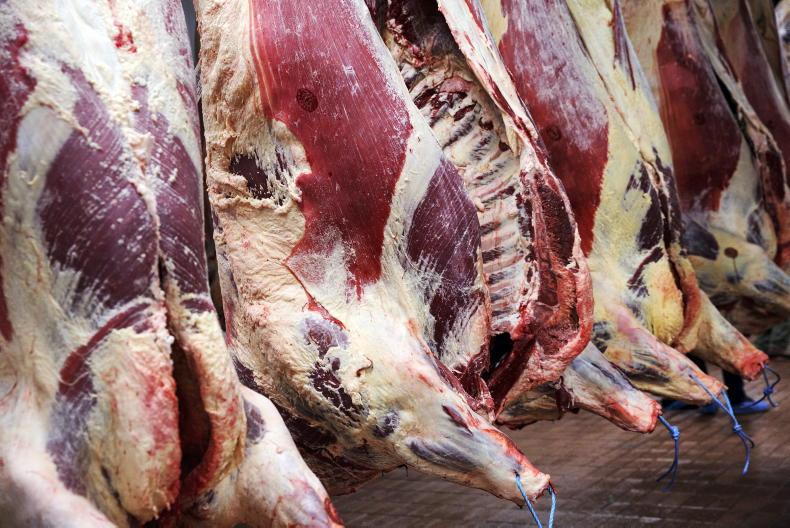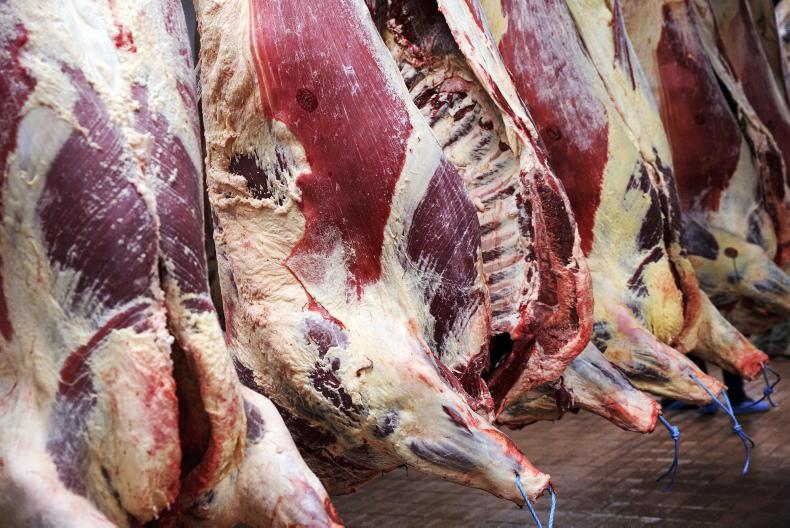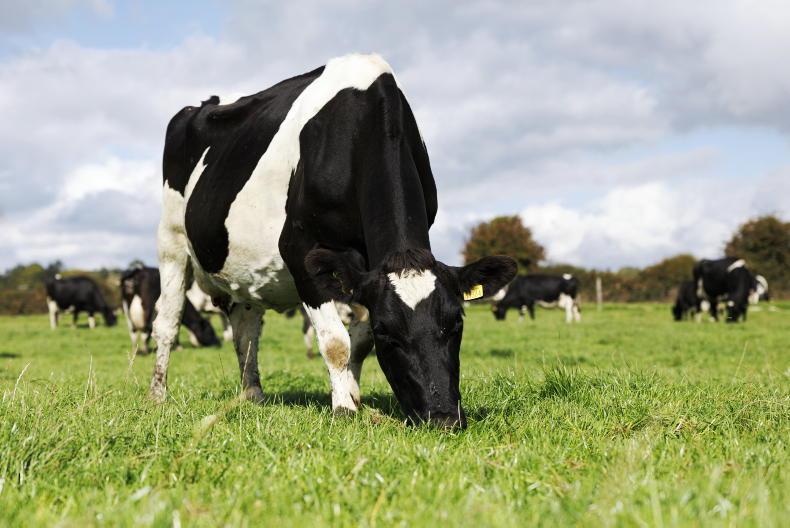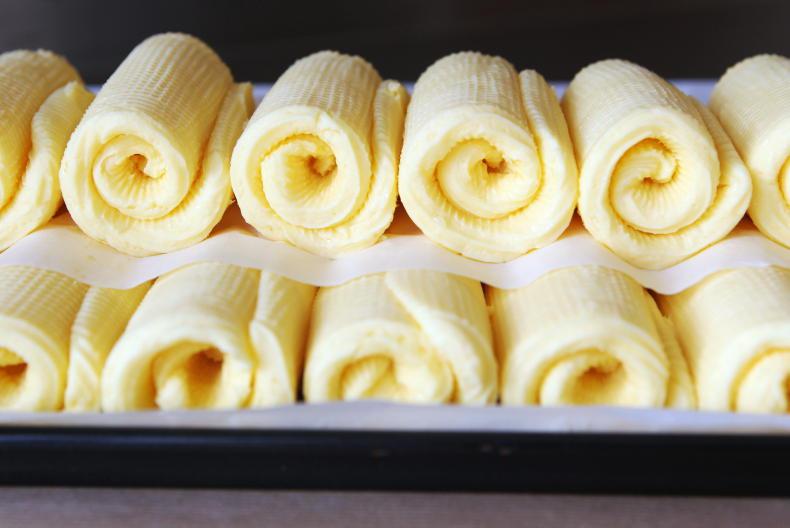For milk supplied in March, NI milk processors made some of the largest ever monthly price increases, with rises of 3p/l to 4p/l being implemented.
These increases put the range of base prices between 36.5p/l and 39.15p/l for milk supplied last month.
Given current returns for commodities such as butter and powder, most analysts, as well as market tools such as the UFU milk price indicator, predict base prices will surpass the 40p/l mark during April and May.
With this is mind, how does the base milk prices being paid by NI processors compare to the equivalent prices in Britain and the Republic of Ireland?
Britain
Processors in Britain operate a very different model for pricing milk compared to those operating in NI.
Firstly, as a greater share of milk in Britain is destined for the liquid market (an average of around 50%), most processors will issue a liquid price and a separate manufacturing price.
Secondly, milk prices in Britain are set at much higher base constituents compared to here.
For example, the standard manufacturing litre has to meet a base of 4.20% butterfat and 3.40% protein to be paid at the published monthly base price.
For the standard liquid litres, base constituents are slightly lower at 4% butterfat and 3.30% protein. Cell counts must also be below 200,000 SCC.
In NI, base constituents are normally in the region of 3.80% to 3.85% butterfat and 3.15% to 3.20% protein.
If a farmer in Britain fails to supply milk at the required base constituents, the price is scaled back accordingly.
Adjusting base constituents in Britain back to those for NI equates to a price deduction of between 0.7p/l and 1.5p/l from base price.
Forward price
The other major difference is that processors in Britain will issue a forward milk price for anywhere from one to three months in advance of milk being supplied.
There have been calls for a similar forward pricing model to be implemented in NI rather than the current retrospective payment system. However, in a rising market, local co-ops argue this will mean prices are lower, as processors will be cautious when predicting ahead.
Analysis of prices paid in the current rising market, does suggest that NI processors have been paying a higher milk price than their competitors in Britain.
Both Dale Farm and Glanbia Cheese operate processing sites in both NI and Britain. In the case of Dale Farm, its 12 month rolling average base price for NI to March 2022 (when adjusted to the British manufacturing base constituents) is 34.02p/l
In contrast, the average 12 month manufacturing milk price across several leading processors in Britain over the same period is 33.32p/l.
However, a sizeable gap has opened between both metrics over the last six months, and it reached its widest point by March 2022.
For the outlined month, Dale Farm’s manufacturing price equivalent averaged 40.89p/l compared to an average of 35.83p/l in Britain.
For an NI dairy farmer supplying 90,000l last month, the price differential is worth more than £4,500.
And if we look at British dairy co-op First Milk, its April and May forward prices for manufacturing litres will be 36.75p/l and 40.05p/l respectively.
For Dale Farm, its March base was 39.05p/l and given market predictions, the co-op’s base price is likely to break the 40p/l barrier for April.
Cheddar pricing
A similar trend exists when comparing the price between Dale Farm and processors in Britain that specialize in manufacturing cheddar.
Over the last 12 months, Dale Farm’s price averaged 33.57p/l compared to an average of 31.39p/l in Britain.
Republic of Ireland
Comparing NI milk prices to those in the Republic of Ireland (ROI) is much more complex, given the differences between the two payment models, despite four processors operating on both sides of the Irish border.
The A+B-C system in ROI puts a far greater weighting on fat and protein, while at the same time, penalising a farmer for the costs associated with removing water from milk.
The monetary value of fat and protein changes each month and reflects the market returns, whereas the value of milk solids in NI is fixed.
This means NI dairy farmers are far more reliant on their processor paying a strong base price each month, as it makes up a far greater percentage of the final milk price.
Base prices
In terms of base price comparisons on both sides of the Irish border, it is not just a case of applying a simple exchange rate.
Again, there is a different base level for butterfat and protein, with Irish prices set at 3.3% protein and 3.6% butterfat.
A 5.5% VAT rate is another factor that has to be excluded from the Irish price before making a direct comparison with NI.
In the case of Lakeland Dairies and Glanbia, both co-ops paid a base of 44.6c/l (excluding VAT) to Irish suppliers for March. Aurivo paid a base of 45.47c/l excluding VAT.
Converting to sterling and adjusting to NI base constituents, the equivalent base price for Lakeland and Glanbia equates to approximately 37.17p/l.
This falls short of the 37.5p/l base Lakeland paid to NI suppliers for March and the 38.75p/l base Glanbia paid, excluding its 0.4p/l sustainability bonus.
In the case of Aurivo, its Irish price converts to around 37.8p/l and is broadly in line with its base of 37.75p/l for NI suppliers.
Read more
Milk contracts should be NI-specific – UFU
UFU wants milk prices set in advance
For milk supplied in March, NI milk processors made some of the largest ever monthly price increases, with rises of 3p/l to 4p/l being implemented.
These increases put the range of base prices between 36.5p/l and 39.15p/l for milk supplied last month.
Given current returns for commodities such as butter and powder, most analysts, as well as market tools such as the UFU milk price indicator, predict base prices will surpass the 40p/l mark during April and May.
With this is mind, how does the base milk prices being paid by NI processors compare to the equivalent prices in Britain and the Republic of Ireland?
Britain
Processors in Britain operate a very different model for pricing milk compared to those operating in NI.
Firstly, as a greater share of milk in Britain is destined for the liquid market (an average of around 50%), most processors will issue a liquid price and a separate manufacturing price.
Secondly, milk prices in Britain are set at much higher base constituents compared to here.
For example, the standard manufacturing litre has to meet a base of 4.20% butterfat and 3.40% protein to be paid at the published monthly base price.
For the standard liquid litres, base constituents are slightly lower at 4% butterfat and 3.30% protein. Cell counts must also be below 200,000 SCC.
In NI, base constituents are normally in the region of 3.80% to 3.85% butterfat and 3.15% to 3.20% protein.
If a farmer in Britain fails to supply milk at the required base constituents, the price is scaled back accordingly.
Adjusting base constituents in Britain back to those for NI equates to a price deduction of between 0.7p/l and 1.5p/l from base price.
Forward price
The other major difference is that processors in Britain will issue a forward milk price for anywhere from one to three months in advance of milk being supplied.
There have been calls for a similar forward pricing model to be implemented in NI rather than the current retrospective payment system. However, in a rising market, local co-ops argue this will mean prices are lower, as processors will be cautious when predicting ahead.
Analysis of prices paid in the current rising market, does suggest that NI processors have been paying a higher milk price than their competitors in Britain.
Both Dale Farm and Glanbia Cheese operate processing sites in both NI and Britain. In the case of Dale Farm, its 12 month rolling average base price for NI to March 2022 (when adjusted to the British manufacturing base constituents) is 34.02p/l
In contrast, the average 12 month manufacturing milk price across several leading processors in Britain over the same period is 33.32p/l.
However, a sizeable gap has opened between both metrics over the last six months, and it reached its widest point by March 2022.
For the outlined month, Dale Farm’s manufacturing price equivalent averaged 40.89p/l compared to an average of 35.83p/l in Britain.
For an NI dairy farmer supplying 90,000l last month, the price differential is worth more than £4,500.
And if we look at British dairy co-op First Milk, its April and May forward prices for manufacturing litres will be 36.75p/l and 40.05p/l respectively.
For Dale Farm, its March base was 39.05p/l and given market predictions, the co-op’s base price is likely to break the 40p/l barrier for April.
Cheddar pricing
A similar trend exists when comparing the price between Dale Farm and processors in Britain that specialize in manufacturing cheddar.
Over the last 12 months, Dale Farm’s price averaged 33.57p/l compared to an average of 31.39p/l in Britain.
Republic of Ireland
Comparing NI milk prices to those in the Republic of Ireland (ROI) is much more complex, given the differences between the two payment models, despite four processors operating on both sides of the Irish border.
The A+B-C system in ROI puts a far greater weighting on fat and protein, while at the same time, penalising a farmer for the costs associated with removing water from milk.
The monetary value of fat and protein changes each month and reflects the market returns, whereas the value of milk solids in NI is fixed.
This means NI dairy farmers are far more reliant on their processor paying a strong base price each month, as it makes up a far greater percentage of the final milk price.
Base prices
In terms of base price comparisons on both sides of the Irish border, it is not just a case of applying a simple exchange rate.
Again, there is a different base level for butterfat and protein, with Irish prices set at 3.3% protein and 3.6% butterfat.
A 5.5% VAT rate is another factor that has to be excluded from the Irish price before making a direct comparison with NI.
In the case of Lakeland Dairies and Glanbia, both co-ops paid a base of 44.6c/l (excluding VAT) to Irish suppliers for March. Aurivo paid a base of 45.47c/l excluding VAT.
Converting to sterling and adjusting to NI base constituents, the equivalent base price for Lakeland and Glanbia equates to approximately 37.17p/l.
This falls short of the 37.5p/l base Lakeland paid to NI suppliers for March and the 38.75p/l base Glanbia paid, excluding its 0.4p/l sustainability bonus.
In the case of Aurivo, its Irish price converts to around 37.8p/l and is broadly in line with its base of 37.75p/l for NI suppliers.
Read more
Milk contracts should be NI-specific – UFU
UFU wants milk prices set in advance










SHARING OPTIONS